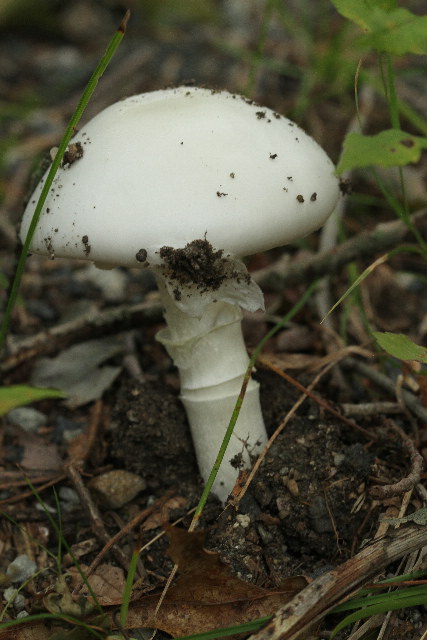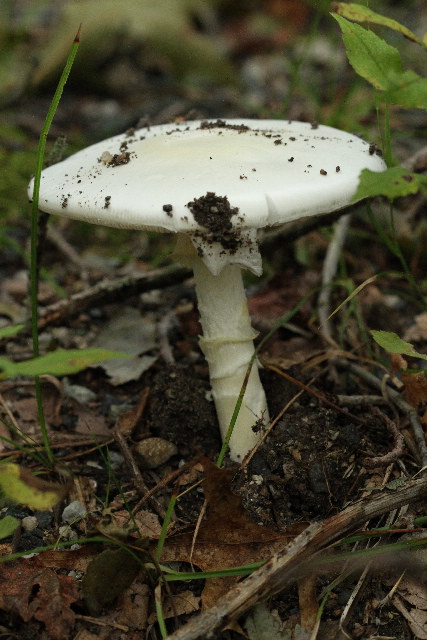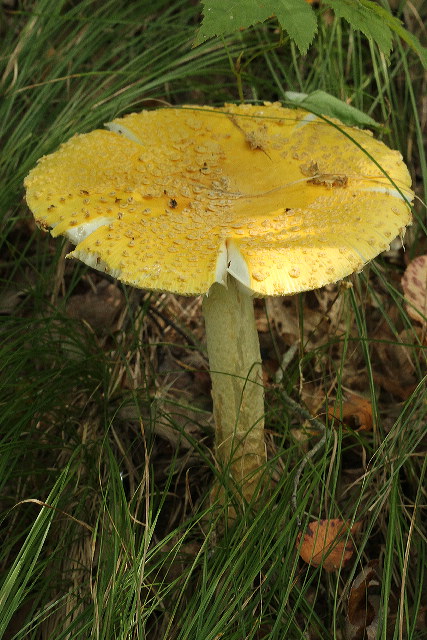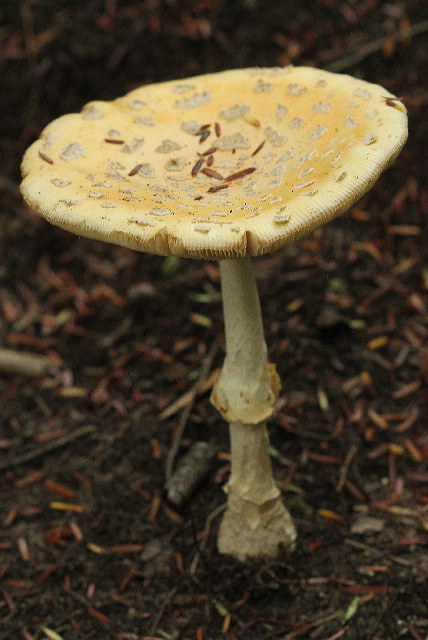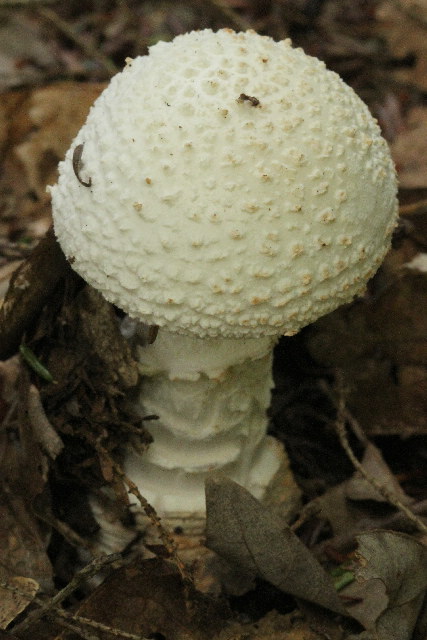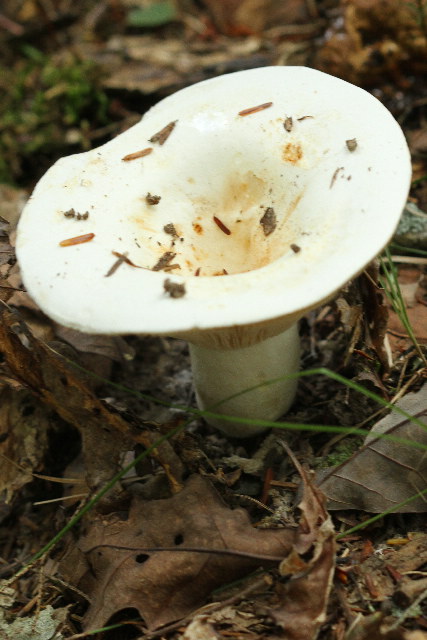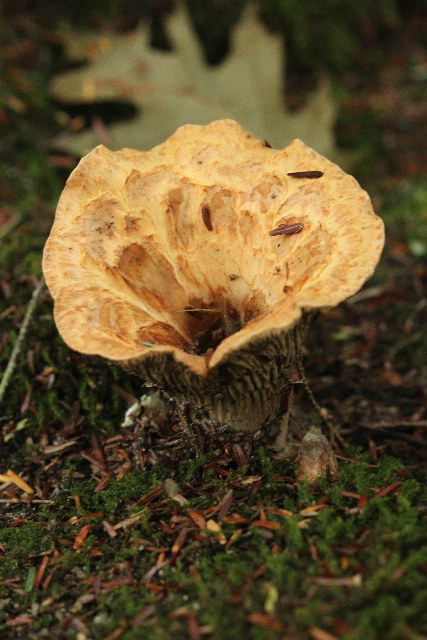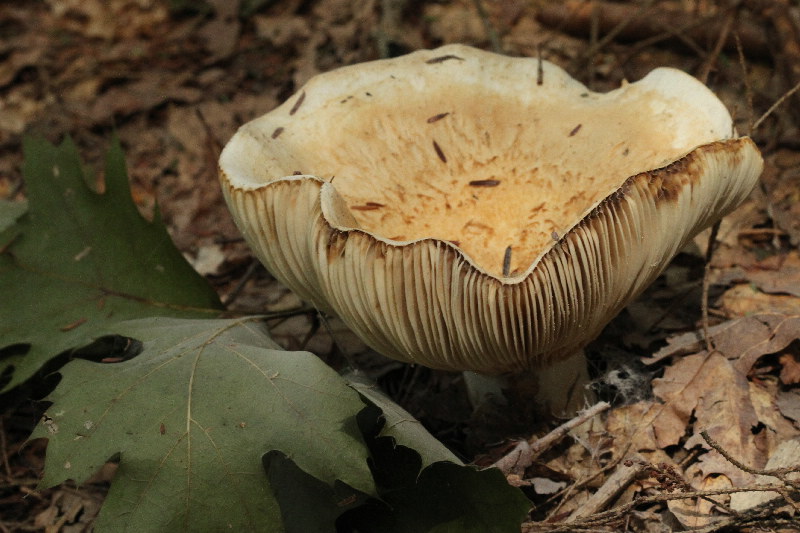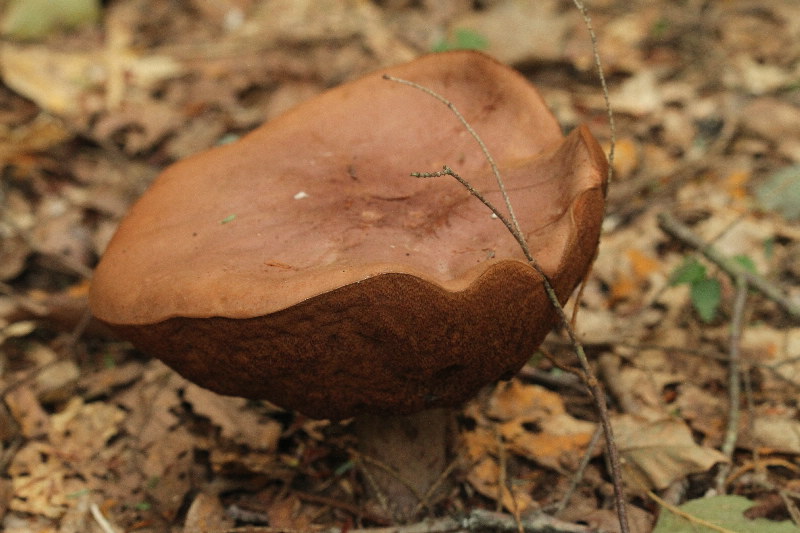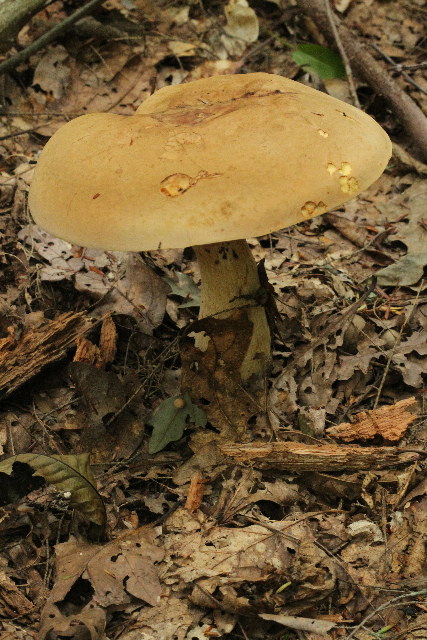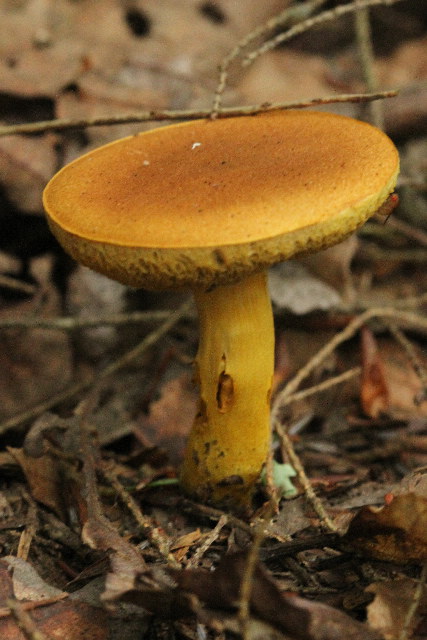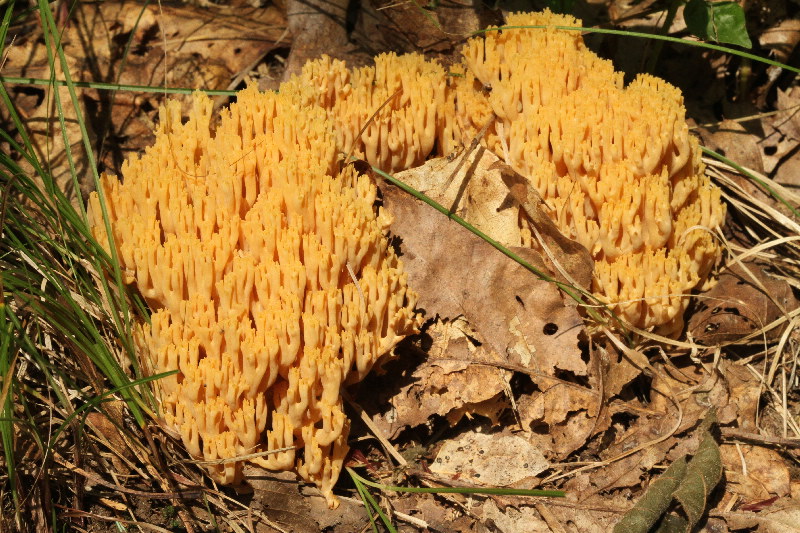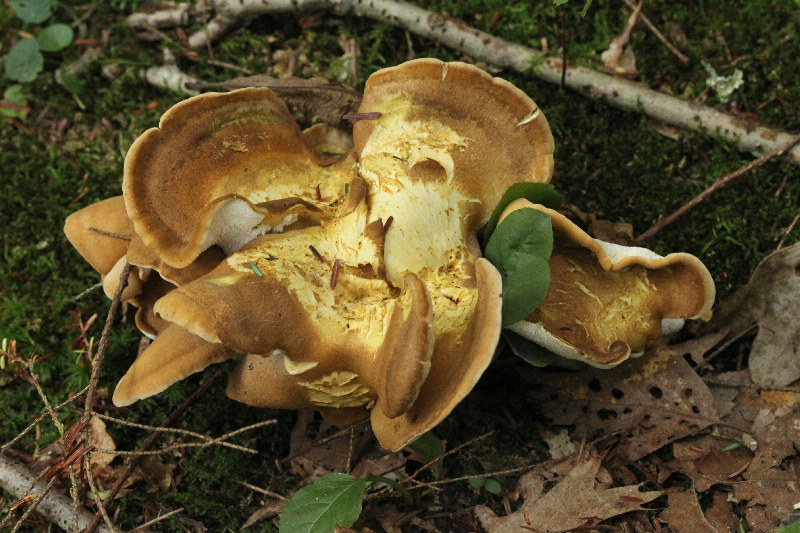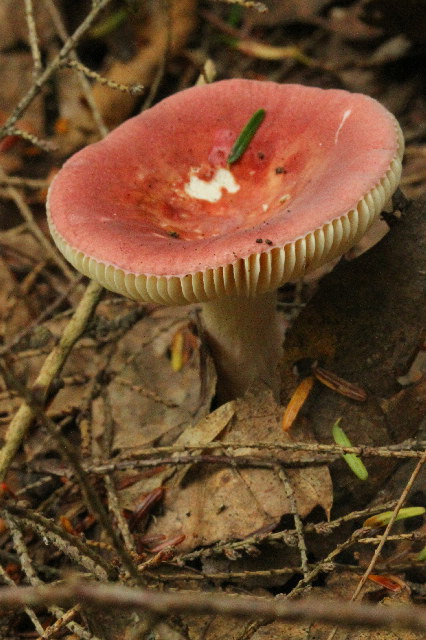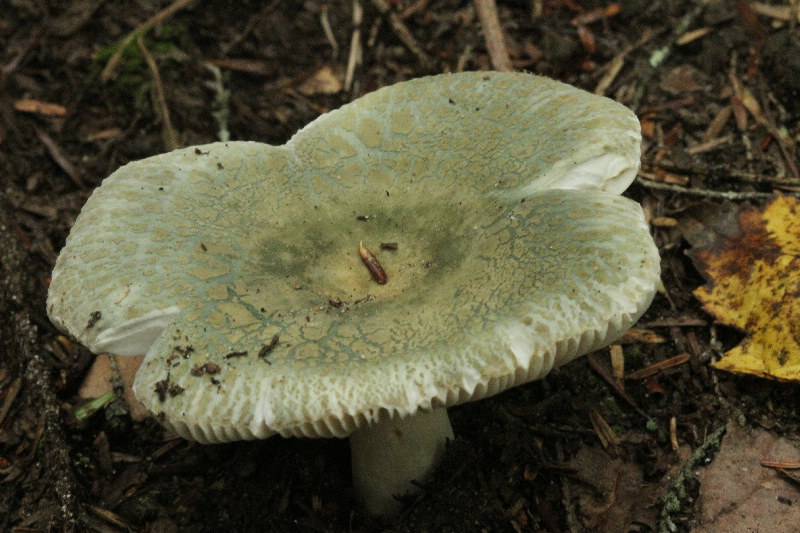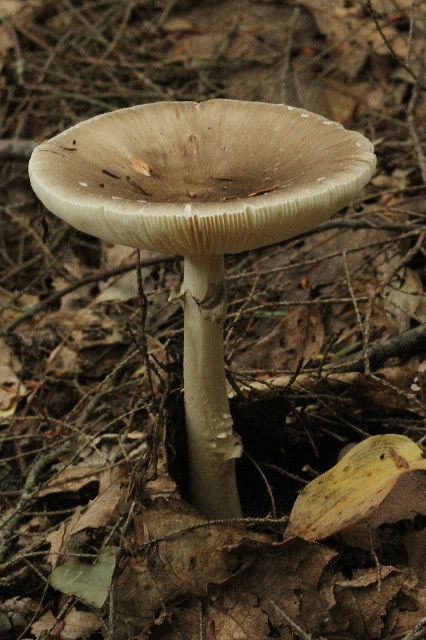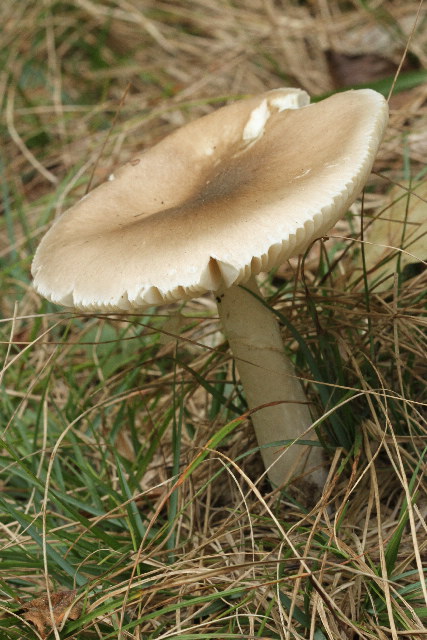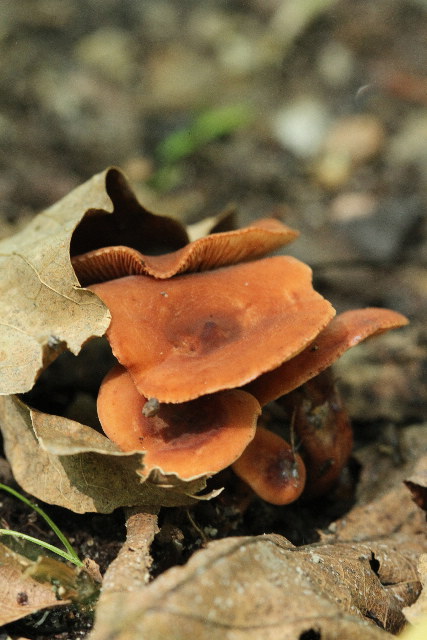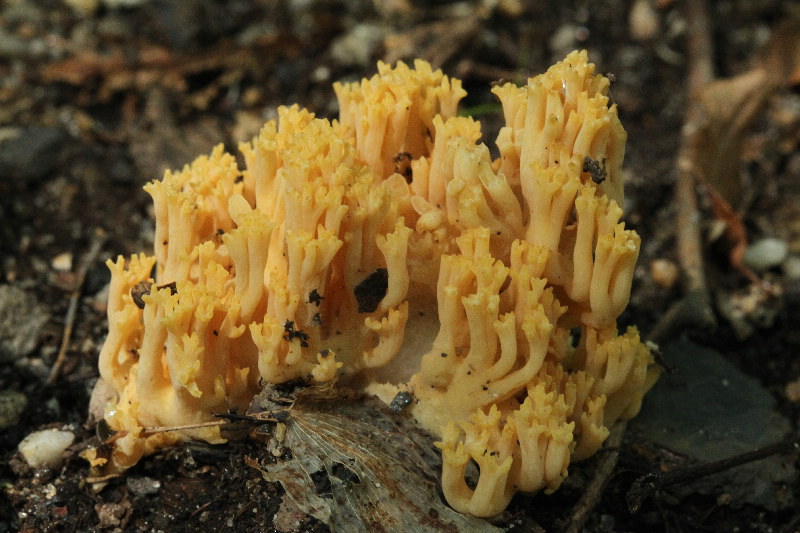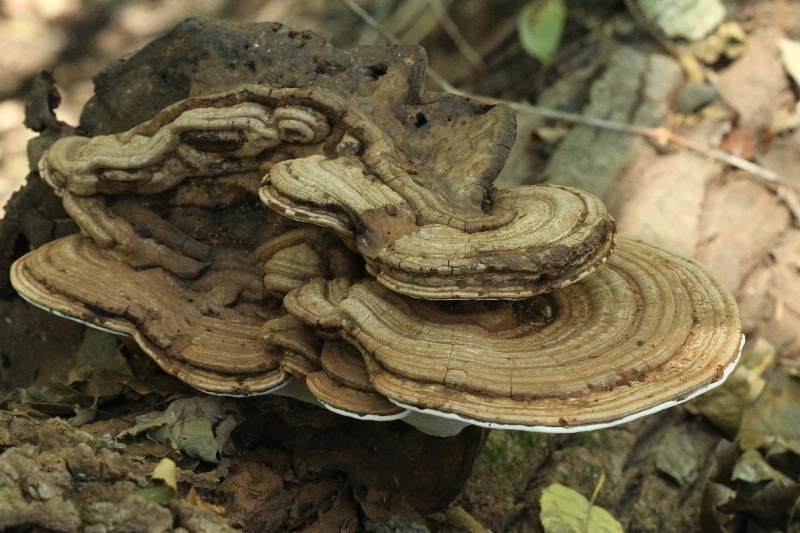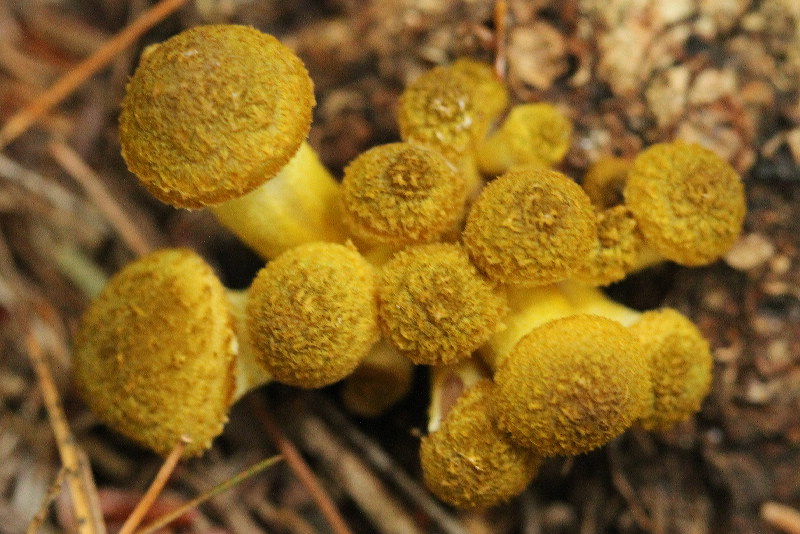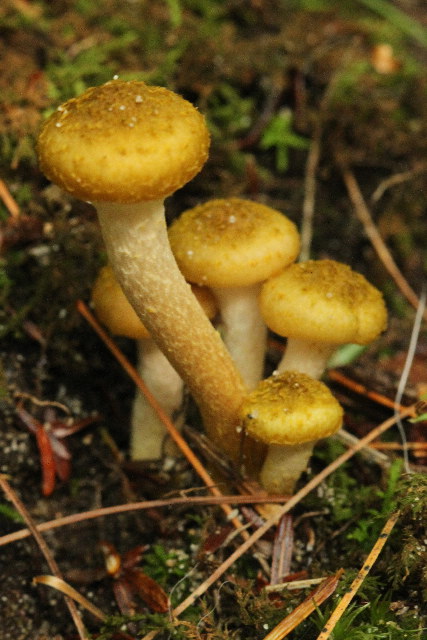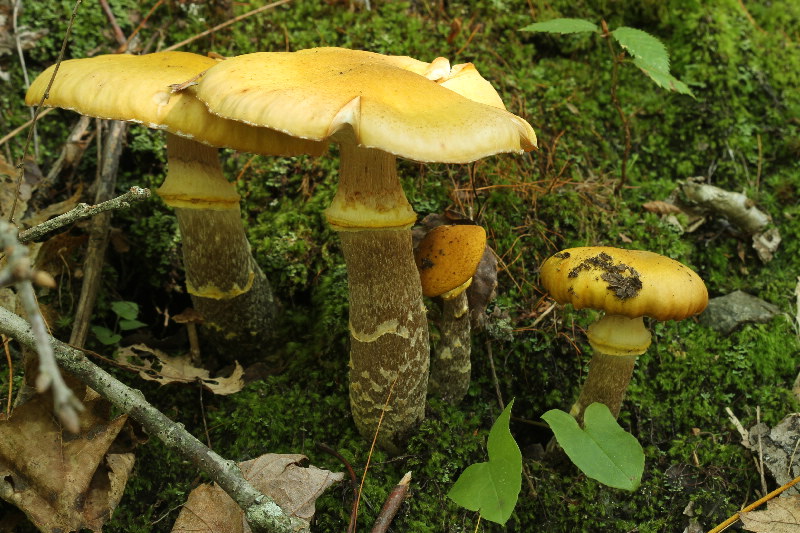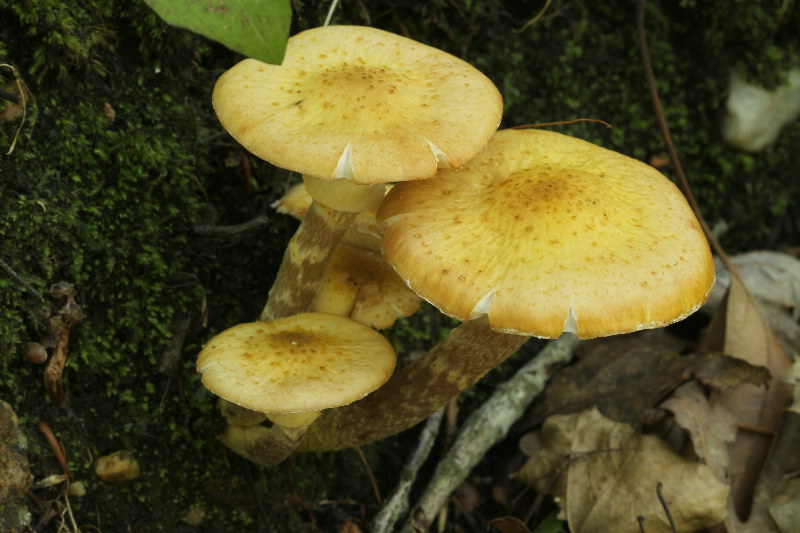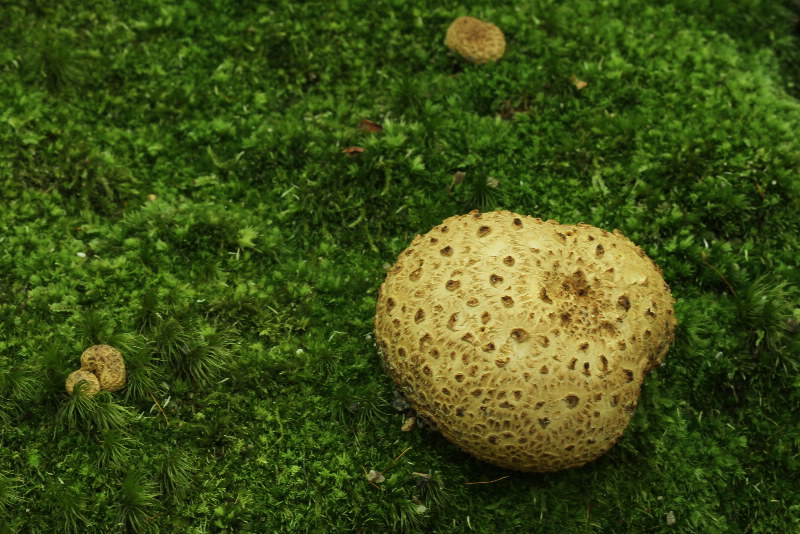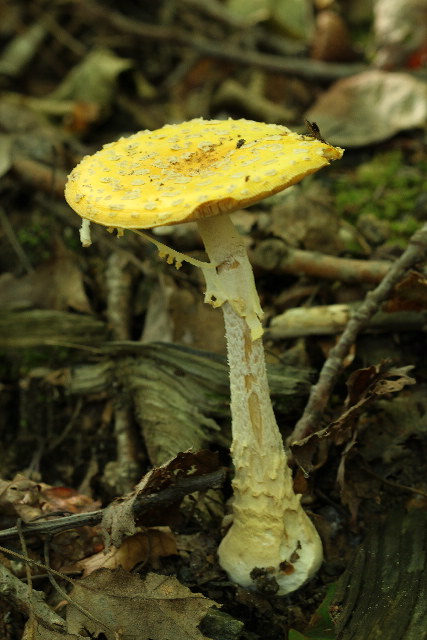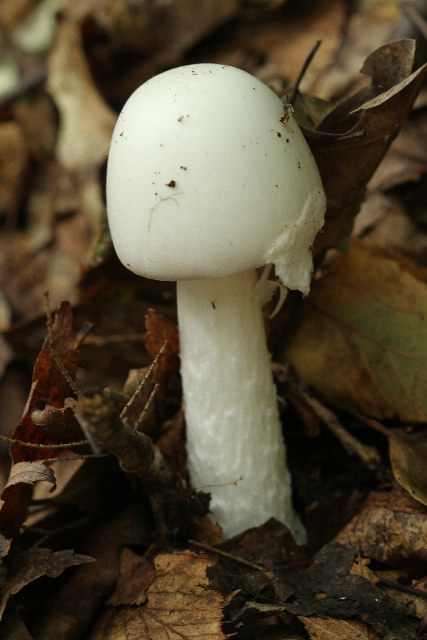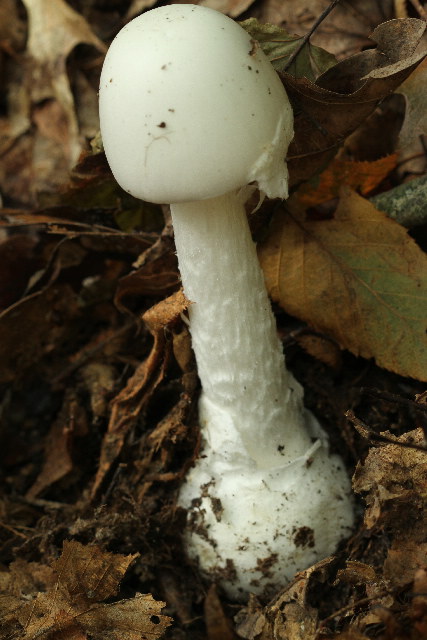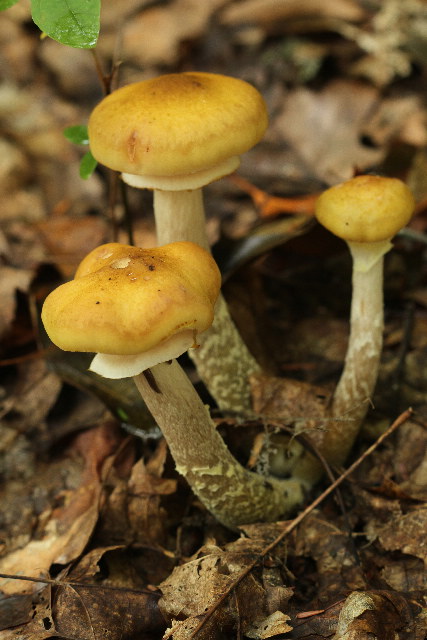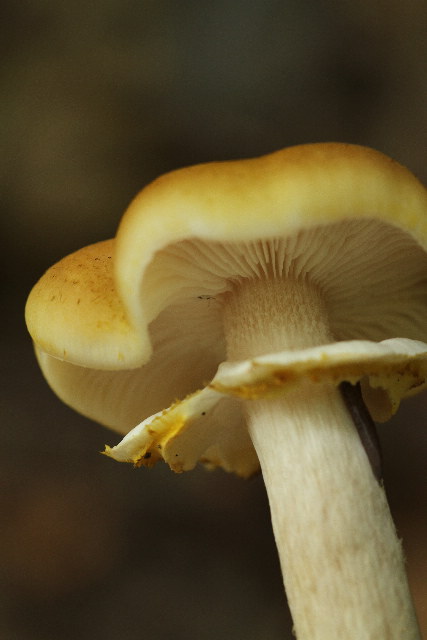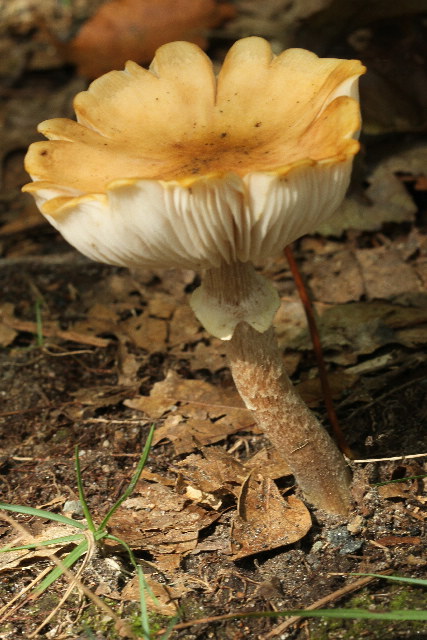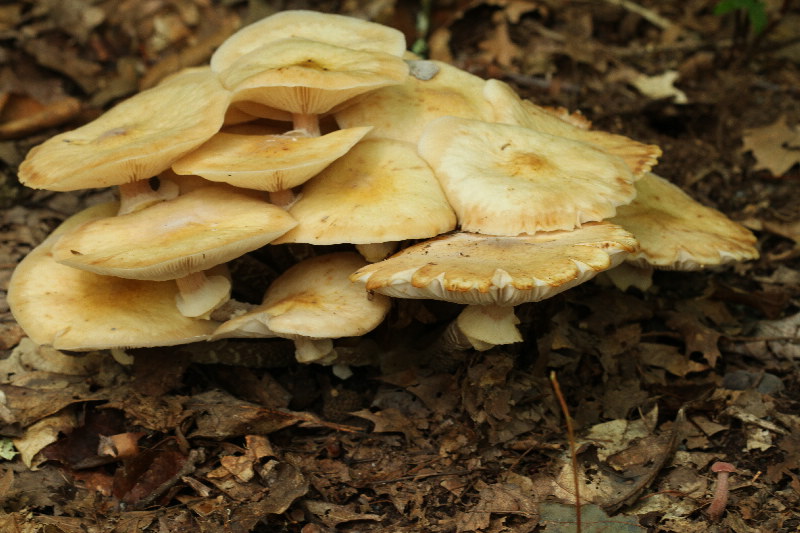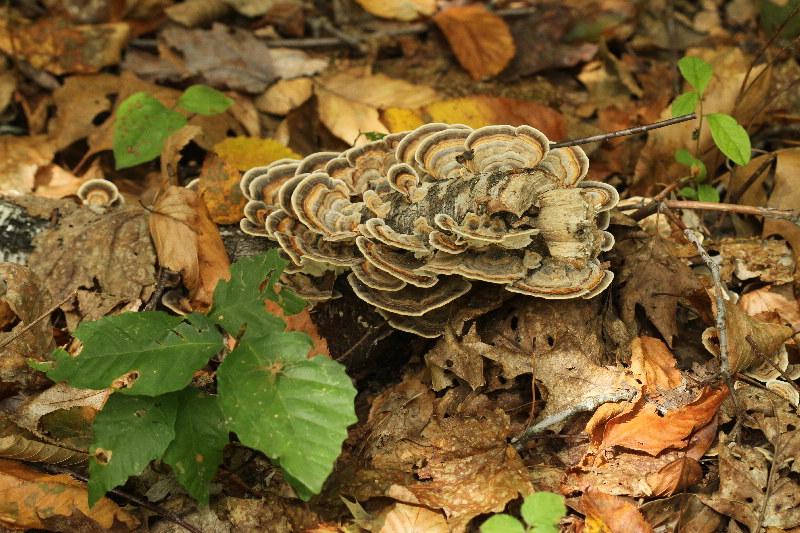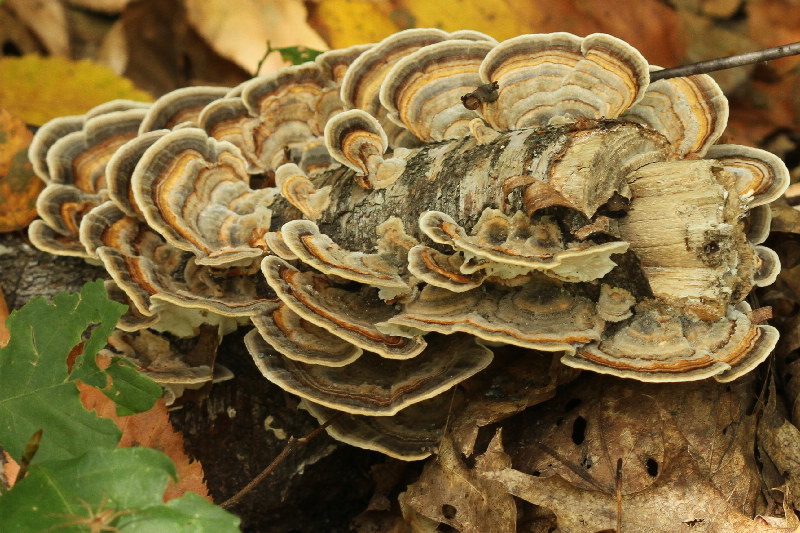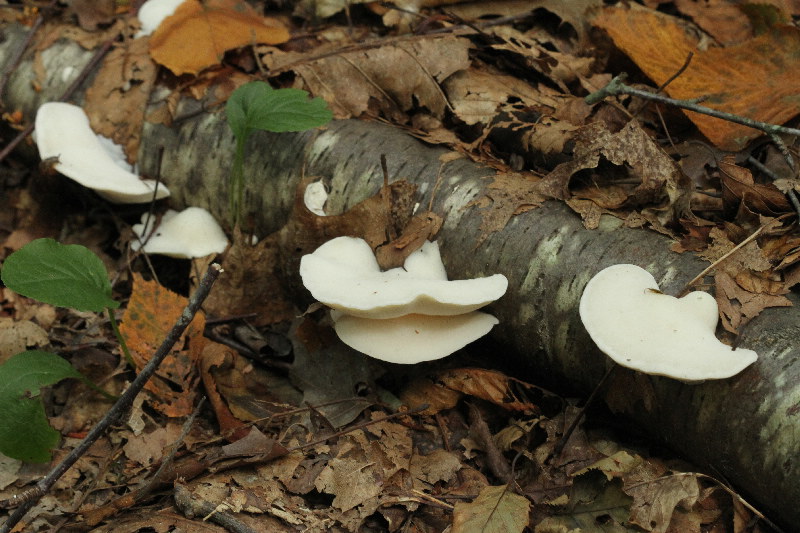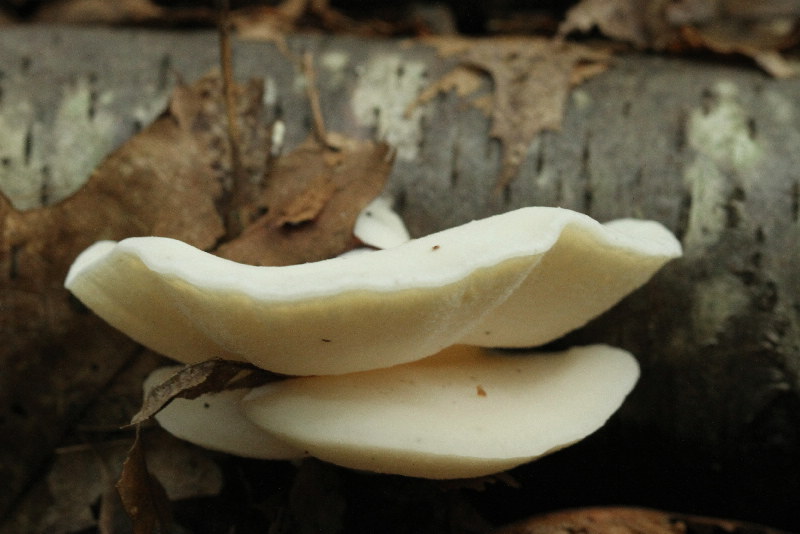Along the Air Line... - Mushrooms The Air Line Trail in Eastern Connecticut - Stan Malcolm Photos |
mHome Page Stan's FlickR Albums |
1. Fly Agaric (Amanita muscaria). September 21, 2002 2. Possibly Amanita citrina. September 24, 2002 3. Purple-bloom Russula (Russula mariae). September 24, 2002 4. Old Man of the Woods (Strobilomyces floccopus). September 21, 2002 5a. Birch Polypore, or Birch Conk (Piptoporus betulinus). September 24, 2002 5b. The
underside of the Birch Polypore is a pure white surface when fresh. ...like
this. (I sketched this some 15 years or so ago, 6. Armillaria mellea October 7, 2002 7. Mature Armillaria mellea. October 1, 2002 8. Lactarius hygrophoroides. October 7, 2002 9. Stereum sp., probably S. complicatum. October 1, 2002 10. Wolf's Milk (Lycoigola epidendrum), a slime mold. June 10, 2002 11a. Dryad's Saddle (Polyporus squamosus). September 1st, 2002 11b. Dryad's Saddle (Polyporus squamosus). September 1st, 2002
|
2011 Additions. More thanks to Terry Stoleson of the Connecticut Valley Mycological Society for help with Mushroom identifications below.
September 3rd. Storm Irene's rain has brought out mushrooms. Amanita virosa, "Destroying Angel" (aka bisporigera) once thought to be 2 species and currently using the second name only. It's found under the first name in older books like the Audubon and Roger Phillips'. |
September 4th. The same mushroom has matured. |
Lots of mushrooms down towards Judd Brook. |
Amanita muscaria var. formosa (an eastern version of the fly agaric). |
Amanita cokeri |
Lactarius deceptivus (my guess). It changes appearance a lot as it ages from smooth and very inrolled to a deep vase shape and cap getting scalier the older it gets. (Other "younger" ones were nearby, looking much like pure white bagels.) |
Gomphus floccosus |
Lactarius sp. I think it's an old L. deceptivus. |
Boletes have pores beneath, not gills. They tend towards earth tones. Boletus or Tylopilus sp. |
Boletus sp. Perhaps B. ornatipes. Can't see the stem and tubes clearly enough. |
Boletus roxanae. That lovely totally golden yellow stem is the best ID clue. |
A Coral Fungus (Family Clavariaceae, probably Ramaria sp.). Ramaria sp. I agree. |
My best guess is some sort of toothed Polypore. Albatrellus cristatus, the "Crested polypore" - no teeth, just pores. |
A Russula species. Russula sp. yes. |
Probably another Russula species. Russula virescens. |
Hmm, perhaps another Amanita, specifically Amanita caesarea, the American Caesar's Mushroom. Amanita fulva - one of several species with no partial veil, therefore no ring on stem. Also, the color, striated cap and small volval sac with orange-brown areas indicate A. fulva. A. caesarea has yellow stem with yellow ring and large pure white volva. In CT, we do have intermediate "relatives" of the latter with yellower caps but the other stem details remain the same. |
Xerula furfuracea, "Rooting collybia" because of it's long tap root. (aka Oudemansiella radicata). Just when I finally learned to remember this latter name the nasty taxonimists changed it. |
Amanita brunnescens |
Amanita sp. |
This dark velvet-brown mushroom ought to be easy to identify, but I haven't a guess. Lactarius lignyotus |
September 13th. Lactarius sp., little brown Milkies are very common right now. |
A Coral Fungus (Family Clavariaceae, Ramaria sp.). |
A Bracket Fungus, growing from a downed tree. It looks to me like it first grew when the tree was erect, then changed orientation after the tree fell. Ganoderma applanatum, the Artist's Conk. I see interesting creatures in it including an old toad and a toothless gator. |
September 14th, 2011. I found a nice glade with rippling water on the stretch of trail between Old Colchester Road and Grayville Road. Some nifty little mushrooms under the conifers. Armillaria (Armillariella in older books) mellea, very young Honeys of which there are 3 or 4 species in the NE. It's a parasite of mixed hardwood forests. They can be found growing on the roots, trunk or top of stumps. |
Just a bit more mature Honeys. With a lens, one can recognize it by the stiff hairs on the surface of the cap but these fibers can disappear with rain in older specimens They're called stumpies or nailheads by some. |
September 18th Mature Honeys - Armillaria (Armillariella in older books) mellea. |
|
Scleroderma citrinum, the Pigskin Poison Puffball, gray to black interior. Not a true puffball and toxic. |
Amanita muscaria var. formosa, the eastern Fly agaric. |
September 21st. An end of summer walk from River Road to the Lyman Viaduct and back. Fungi were abundant on this woodland stretch of the trail. Amanita virosa, the beautiful but deadly Destroying Angel. |
Amanita species possess a "volva" or universal veil. Remnants can often be found on the mushroom cap and at the base of the stalk where it forms a swollen cup-like structure. |
This, and the next 3 photos, appear to be the same gilled mushroom species, varying in maturity and proximity. They're all Honey Mushrooms Armillaria (Armillariella in older books) mellea. |
|
|
|
Turkey-tail bracket fungi (probably Trametes versicolor). Trametes is correct. |
|
White Cheese Polypore (Tyromyces sp., possibly Tyromyces chioneus). Tyromyces is correct. |
|
